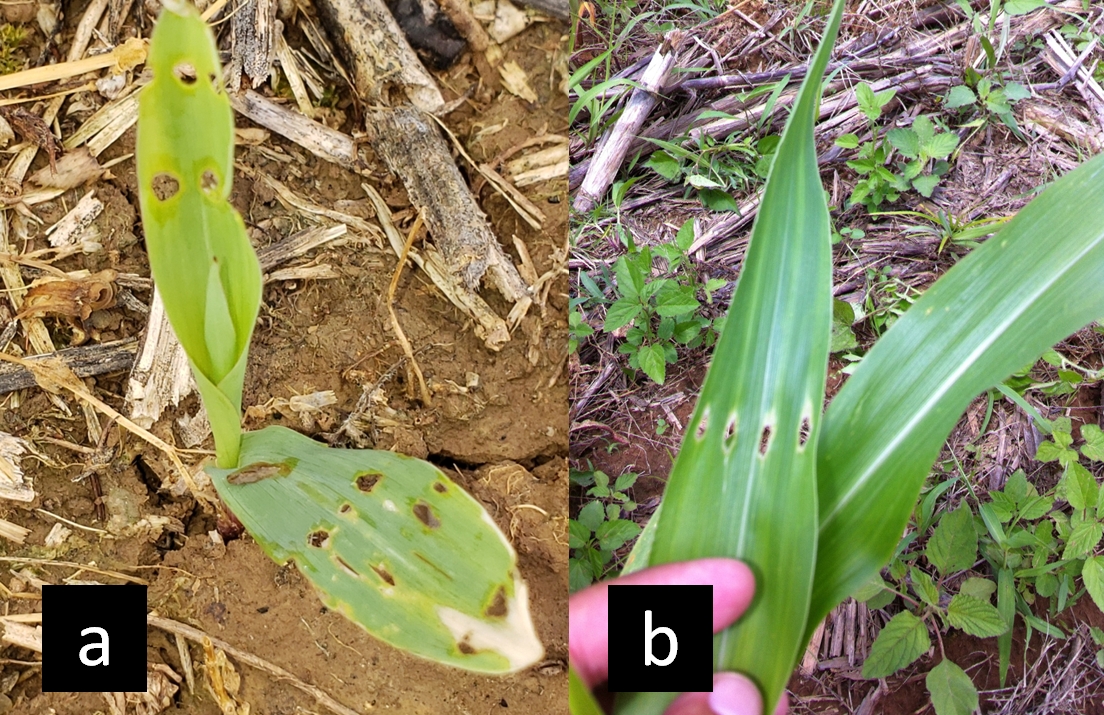Improving Soybean Arthropod Pest Management in the U.S.
Improving Soybean Arthropod Pest Management in the U.S.
Published on Apr. 14, 2025

Principle Investigator: Raul Villanueva
National Research Service/National Institute of Food and Agriculture
Soybean production continues to increase to meet world demand. In 2021, the U.S. produced 4.44 billion bushels of soybeans, making it the second-largest soybean producer in the world. Emerging and existing invertebrate pests continue to threaten soybean yield and quality as they adapt to management practices and expand their ranges. In the short term, the loss of previously effective management tactics is increasing producer costs. In the long-term, the establishment of invasive insect pests will continue to impact soybean ecosystems, altering integrated pest management (IPM) strategies that have proven effective in the past. In the Midsouth and Southeast, corn earworm, soybean looper, and stink bugs such as the redbanded stink bug, brown stink bug, southern green stink bug, and green stink bug continue to be major pest issues. In addition, the brown marmorated stink bug continues to expand its range, along with the southern green stink bug. In 2020, the stink bug complex was the costliest pest group in soybean, followed by the corn earworm. In the Mid-Atlantic and Mid Central, slugs are significant threats to soybean, particularly as soil conservation practices increase. Existing pests such as the soybean aphid, Dectes stem borer, stink bugs, and a complex of insect defoliators have the potential to result in unacceptable yield loss when significant pressure occurs. To address these concerns, a coordinated research and extension delivery project is necessary to understand pest biology, develop best management practices, and deliver recommendations to soybean producers.
Goals
- Document changes in new and existing soybean pests and beneficial arthropods. Comments: Soybean is injured by a diverse guild of insect pests feeding on leaves, stems, roots, nodules, and pods. The major insect pests in these guilds have markedly changed in the last two decades due to the introduction and range expansion of invasive insects and the adaptation of native pests.
- Characterize soybean pests and beneficials through studies on their biology and ecology Comments: The range expansion of invasive pests, coupled with the adaptation of native pests, necessitate further research into how insects cope with new selection pressures.
- Develop best management practices (BMPs) on soybean pests through a coordinated effort to monitor, design protocols, develop thresholds, and evaluate new and existing tactics Comments: As soybean insect pest assemblages change, there is a need to update pest management strategies.
- Educate and inform farmers, industry, colleagues, general public, and agricultural professionals using traditional tools and innovative methods. Comments: Our Working Group works extensively with stakeholders at all levels. For our clientele, we represent one of the only unbiased sources of information for decision-making of IPM strategies.
The target audience will include the following: growers, extension agent, commodity boards ,agronomic consultants, the pesticide industry, students and researchers from universities in the US and abroad.
The activities described above will document insect pests of soybeans in each state, both in terms of acres infested, acres treated, cost of treatment, and estimated loss due to each insect, characterize insect pest biology and interactions of these pests with the biotic and abiotic factors in each region, document of regional performance data of host plant resistance genes and plant incorporated protectants and insecticide efficacy and spread of insecticide resistance, expand the knowledge on deploying integrated control tactics, and delivering and presenting information for regional extension publications and outreach material to be used by end users
Entomology PSS
